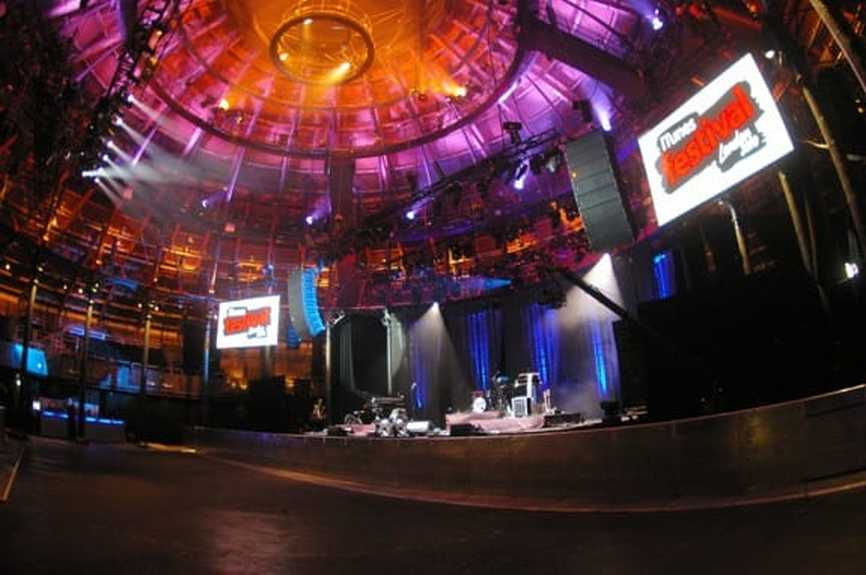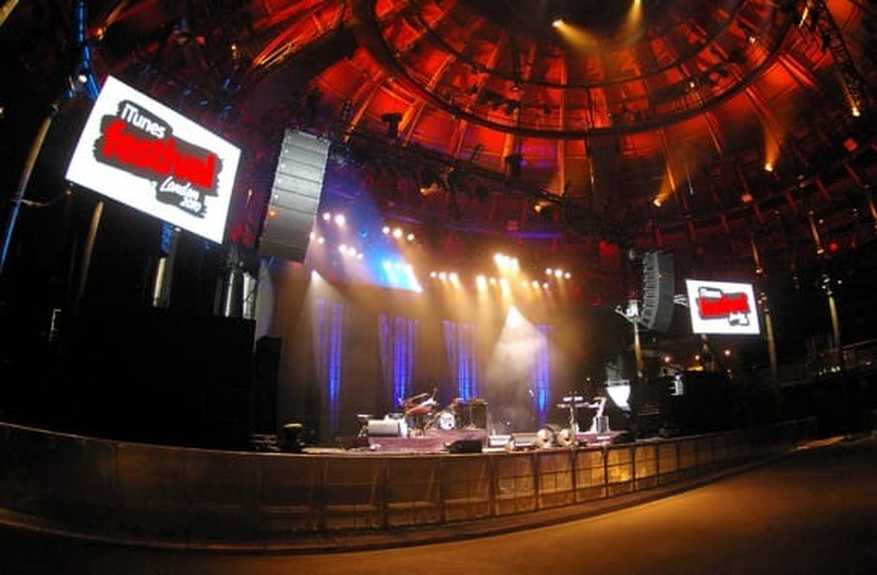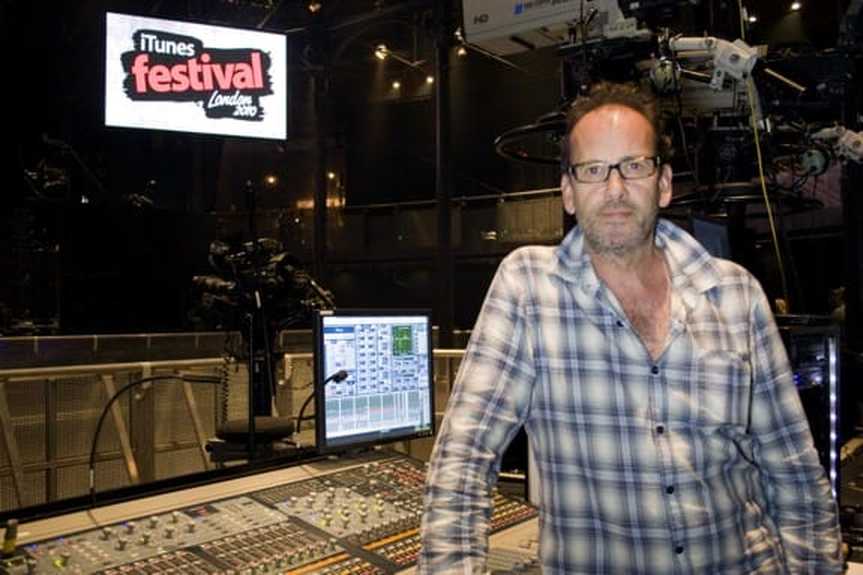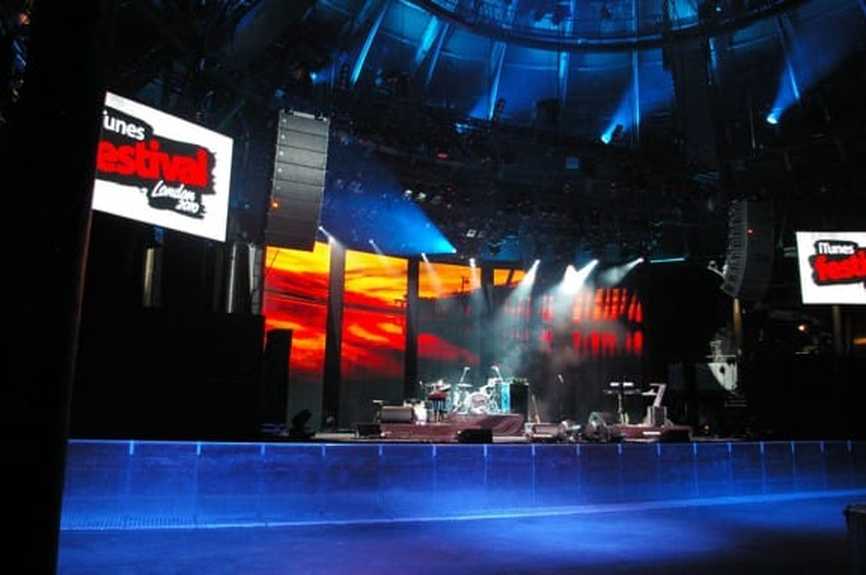MARTIN AUDIO MLA ROCKS THE ITUNES FESTIVAL
Huw Richards leads the acclaim for 'phenomenal' new system
Boasting such a strong historic connection with London's Roundhouse - dating back to the late 1960s - it was fitting that more than 40 years after Martin Audio's pioneering installation at the venue, it should find itself hosting the UK debut of the manufacturer's next generation MLA Multicellular Loudspeaker Array for the duration of the iTunes Festival.
For the 31 days of July, over 62 bands and their sound engineers - embracing different genres, different desk preferences … and different SPL levels - set out to unlock the magic that resides in these groundbreaking DSP-controlled loudspeakers, with their individually-addressable cells.
Although the MLA has been designed to take on venues up to stadium level, the Roundhouse has a capacity of just 1,800 (seated) and 3,300 standing - and being circular the throw distance is fairly minimal.
The design was set accordingly. With the newly created balcony also requiring coverage, eight MLA elements were flown at either side of the stage, with eight MLX subs in a broadside array, hidden under the stage apron. A further two flown 4-element W8LC Compact arrays provided sidefills and four W8LM Mini arrays provided coverage for the VIP bar (balcony level, stage right).
Martin Audio Research & Development Director, Jason Baird set up (and locked out) the multi-cellular processing using MLA's Display 2.0 optimisation software. The finishing touch was to 'welcome' visiting sound engineers with a clearly positioned notice at the FOH rack position, advising that they were about to mix their sound through a revolutionary system.
Said Baird, 'We have seen a high concentration of mix engineers adopting completely different approaches - from applying extreme amounts of boost and cut to running their desk output EQ totally flat. However, the idea of the system was not to show up the inadequacies of sound engineers but to make the front-of-house engineer into a star.'
Experienced FOH engineer Huw Richards, who took charge of the system throughout the Festival (and inducted the incoming engineers) was quick to recognise not only the considerable power capabilities of the MLA but its remarkable consistency from front to back, and also on the balcony. 'It's completely smooth and consistent wherever you stand in the room,' he declares of a system whose design goal was to provide little more than ±1dB variation at any seat, on any level.
'He was also amazed by how quickly we tuned the system once we'd switched it on - which was another underlying goal of the MLA concept,' explained Jason Baird.
Richards himself simply described the system as 'phenomenal.' He said, 'The MLA just makes everything so easy - the sub end is fantastic and the whole system is incredibly stable.' Stability in this case referred to how effortlessly the MLA reproduced complex and dynamic performances, without a hint of harshness or compression.
'We mixed Faithless entirely flat and produced a fantastic sound which measured a high SPL at the desk. We went from there to an opera singer, Latin guitarist and orchestra [Mexican tenor Rolando Villazón and classical guitarist Milos Karadaglic] where we were running the system down to 95dB - and you could hear a pin drop!'
At the other extreme, the MLA showed just how forgiving it was when one engineer added 9dB of boost to the EQ. 'That level of boost would have caused other systems to keel over and die - but the MLA didn't seem to mind.
'It was an amazing test of the system and yet all it did was move the sub bass around a bit!'
Aside from noting how neat the rig was to fly, Huw Richards observed that the subs' rear radiation was sufficiently well behaved to not require cardioid cancelling - even though they are set right under the stage.
'The system has masses of headroom and does not sound strained when pushed. The vocals and instruments can be accurately placed in the mix and this does not fall apart when the system is driven hard.
'In fact I'm hugely impressed. Martin Audio have created a bit of a beast - but it's a tame beast!'
He noted that one of the sound engineers that had managed to maximize the system was Foals' FOH man, Paul Fyfe. Fyfe is well used to playing through Capital Sound's Martin Audio line arrays on tour - but he had never experienced anything quite like this.
'I found the new MLA system great for overall coverage in the Roundhouse and I eagerly look forward to using it again with other Foals shows. I was delighted to finally get to mix in one of London's historic venues - and the Martin Audio system served me well.'
In summary, says Jason Baird, the iTunes Festival proved an excellent showcase for the MLA system, showing its ability to cope effortlessly with the entire gamut of styles - from rock, pop, dance, folk, classical/opera - without imposing any character or colouration upon them.
Footnote: With the Festival in its last few days, Jason Baird and colleague Ambrose Thompson treated sound technicians to some wizardry in an advanced piece of showboating. They decided to electronically extend the coverage right over the stage barrier and into the pit, just to show how the physical aiming of the system can be overcome. Perhaps more impressively they blew a hole right through the coverage of the mix village and when stepping into that area, only the reverb coming back from the room could be heard. In this case it was a 'trick' to show how easily a problem area such as a reflective balcony front can be dealt with. Finally they made the system get louder and louder as you moved towards the back of the room. Now that's some masterclass!
Further information from:
Maureen Hayes, Martin Audio
Tel: +44 (0)1494 535312
Fax: +44 (0)1494 438669
Jerry Gilbert, JGP Public Relations
Tel: +44 (0)1707 258525
Fax: +44 (0)1707 267140
About the MLA
The MLA multi-cellular approach enables each cell to be individually addressed by its own DSP (and Class D amplification); thus with six cells in each enclosure a 24-box system provides 144 uniquely tuned elements.
Since the144 cells that form a typical 24-box hang is too great a number to optimize manually, Martin Audio's proprietary Display 2.0 system design software automatically calculates FIR DSP filters for each cell and a redundant-ring audio network (U-NET) downloads the settings into each array enclosure. Martin's VU-NET software provides real time control and monitoring of the system.
Aside from its even frequency response and SPL over audience areas, MLA also boasts a very high system output (140dB peak, per cabinet @1m); Automatic optimization of the array, both physically (splay angles) and electronically (DSP); Computer control and monitoring of the entire system, and total control of the sound system.
Additional features include 90° x 7.5° dispersion; a compact size (1136mm wide x 372mm high x 675mm deep), one-box-fits-all (festivals to theatres) application range and a global voltage, power factor corrected power supply.
The system also includes an MLX powered, flyable subwoofer capable of an unprecedented peak output of 150dB @ 1m, an MLD downfill cabinet and Merlin 4-in/10-out system controller and network hub. Audio input is via analogue, AES3 or U-NET.



